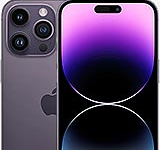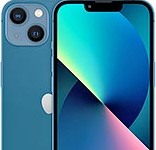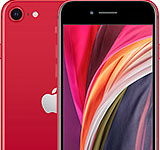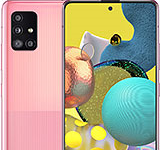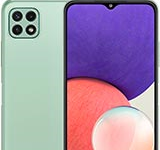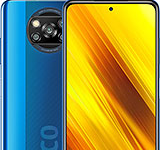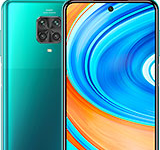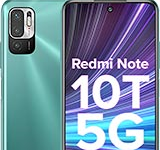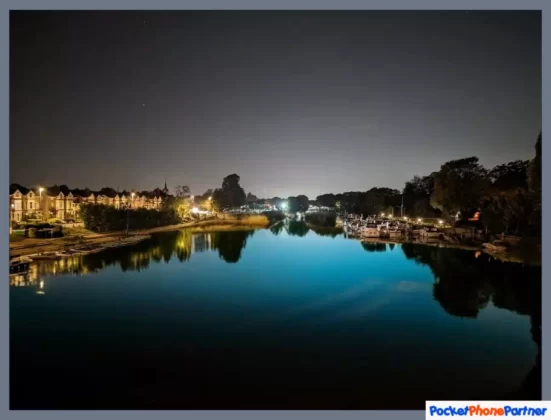Updated on November 30, 2023
KEY TAKEAWAYS
- Understanding Image Formats: Before delving into Ultra HDR, grasp the basics of image formats, including the significance of compression and knowledge of popular formats like JPEG and PNG.
- Magic Behind Ultra HDR: Explore the unique features of Ultra HDR, Google’s response to the evolving HDR landscape, including its compatibility with standard JPEG and the devices capable of capturing its depth and realism.
- Advantages of Ultra HDR: Discover the benefits of integrating Ultra HDR into your photography, such as enhanced compatibility, a more lifelike representation of HDR content, and the innovative approach to contrast and gain maps setting it apart.
- Inner Workings of Ultra HDR: Dive into the technical details of Ultra HDR, understanding how gain maps in standard JPEG images redefine the HDR experience and enable seamless transitions between Standard Dynamic Range (SDR) and HDR screens.
- Challenges Ahead: Acknowledge the challenges faced by Ultra HDR, from compatibility issues to concerns about compression during file transfer. Consider the current limitations of hardware and devices capable of capturing Ultra HDR photos, recognizing potential hurdles for widespread adoption.
Welcome to the future of photography! Google has revolutionized the game with its latest innovation—Ultra HDR. In this guide, we’ll walk you through everything you need to know about this groundbreaking image format introduced with the Pixel 8 and Pixel 8 Pro.
From understanding image formats to the benefits and challenges of Ultra HDR, this guide will equip you with the knowledge to elevate your photography experience.
What is an Image Format?
Let’s start with the basics. Before diving into Ultra HDR, it’s essential to grasp the concept of image formats. Learn why compression matters and explore popular formats like JPEG and PNG. Understanding the foundations will pave the way for comprehending the intricacies of Ultra HDR.
Image Format Basics
An image format refers to the way digital images are stored and encoded. It encompasses various elements like compression, color depth, and resolution. Understanding image formats is crucial as it sets the stage for more advanced concepts like Ultra HDR.
Compression Significance
Compression plays a vital role in image formats. It is the process of reducing the file size of an image by eliminating redundant or unnecessary data. This is particularly crucial for efficient storage and transmission of images, making them more manageable without compromising quality.
Popular Formats – JPEG and PNG
Two widely used image formats are JPEG (Joint Photographic Experts Group) and PNG (Portable Network Graphics). JPEG is known for its efficient compression and is commonly used for photographs. PNG, on the other hand, supports lossless compression, making it ideal for images with transparent backgrounds or intricate details.
Ultra HDR Introduction
Ultra HDR (High Dynamic Range) takes image quality to the next level. It enhances the contrast and color range, providing a more realistic and visually stunning representation. This technology is particularly beneficial for photography and videography, capturing scenes with a broader spectrum of colors and details.
Key Features of Ultra HDR
| Enhanced Contrast▾ |
| • Ultra HDR significantly improves the contrast between the darkest and brightest parts of an image, resulting in a more dynamic visual experience. |
| Extended Color Range▾ |
| • It expands the range of colors that can be displayed, creating a more vibrant and lifelike image. |
| Increased Detail▾ |
| • Ultra HDR captures finer details in both shadows and highlights, offering a more comprehensive and nuanced depiction of the scene. |
| Realism▾ |
| • The overall effect of Ultra HDR is a heightened sense of realism, making images and videos appear closer to what the human eye perceives. |
Highlights of Image Format Exploration
| Foundational Knowledge▾ |
| • Exploring image formats provides a foundational understanding of how digital images are structured and stored. |
| Path to Ultra HDR▾ |
| • This exploration acts as a stepping stone towards comprehending the complexities of Ultra HDR technology. |
| Practical Importance▾ |
| • Knowledge about image formats is practical, influencing decisions in areas such as storage, transmission, and display of digital images. |
By delving into the basics of image formats, considering compression nuances, and familiarizing oneself with popular formats like JPEG and PNG, one can better appreciate the transformative power of Ultra HDR and its key features.
What is Ultra HDR?
Ultra HDR is Google’s response to the ever-changing landscape of High Dynamic Range (HDR) content. This technology aims to elevate the visual experience by pushing the boundaries of color, contrast, and brightness, providing users with a more immersive and lifelike viewing encounter.
Key Features and Highlights
| Enhanced Visual Experience▾ |
| • Ultra HDR goes beyond conventional HDR standards, intensifying color vibrancy, contrast, and brightness to deliver a visually striking and lifelike representation of scenes. |
| Compatibility with Standard JPEG▾ |
| • One of the standout features of Ultra HDR is its compatibility with standard JPEG format. This means that the enhanced HDR content can be easily viewed and shared across a wide range of devices without requiring specialized hardware or software. |
| Stunning Depth and Realism▾ |
| • Ultra HDR brings a new level of depth and realism to images, capturing details in both shadows and highlights with exceptional precision. This results in images that are more true to life and visually captivating. |
| Google Integration▾ |
| • As a Google technology, Ultra HDR is seamlessly integrated into the Google ecosystem, offering users a streamlined experience for capturing, sharing, and viewing HDR content across various Google-supported devices and platforms. |
| Device Compatibility▾ |
| • Ultra HDR is designed to work with a variety of devices capable of capturing enhanced HDR content. This includes smartphones, cameras, and other imaging devices equipped with the necessary hardware to unleash the full potential of Ultra HDR. |
In summary, Ultra HDR is Google’s advanced take on HDR technology, enhancing the visual experience by pushing the boundaries of color, contrast, and brightness. Its compatibility with standard JPEG makes it accessible across a wide range of devices, and its ability to capture stunning depth and realism sets it apart in the world of high-quality imaging.
The seamless integration into the Google ecosystem and compatibility with various devices further contribute to the widespread accessibility and adoption of this cutting-edge HDR technology.
Benefits of Ultra HDR
Ultra HDR, a revolutionary advancement in photography, brings a myriad of benefits that elevate the visual storytelling experience. One of its standout features is enhanced compatibility, allowing photographers to seamlessly integrate Ultra HDR into their workflow.
This compatibility extends across various devices and platforms, ensuring a smooth transition for professionals and enthusiasts alike.
A key highlight of Ultra HDR lies in its ability to deliver a more lifelike representation of HDR content. This means that the dynamic range captured in photos is not only expanded but also presented in a way that mirrors the natural nuances of light and shadow.
The result is visually stunning images that convey a heightened sense of realism, making the viewer feel more connected to the scene.
What sets Ultra HDR apart from traditional HDR techniques is its innovative approach to contrast and gain maps. By employing advanced mapping algorithms, Ultra HDR achieves a level of precision that was previously unattainable.
This translates to sharper details in both highlights and shadows, preserving the intricacies of the scene without compromising on overall image quality.
Key Features and Highlights of Ultra HDR
| Enhanced Compatibility▾ |
| • Seamlessly integrates with various devices and platforms. |
| • Facilitates a smooth transition for both professionals and enthusiasts. |
| Lifelike Representation▾ |
| • Expands dynamic range for a more natural portrayal of light and shadow. |
| • Creates visually stunning images with heightened realism. |
| Innovative Contrast and Gain Maps▾ |
| • Utilizes advanced mapping algorithms for unparalleled precision. |
| • Preserves sharp details in highlights and shadows, maintaining overall image quality. |
In conclusion, Ultra HDR not only marks a new era in visual storytelling but also addresses the limitations of traditional HDR techniques. With its enhanced compatibility, lifelike representation, and innovative mapping approach, it stands as a powerful tool for photographers seeking to push the boundaries of their craft and deliver captivating images that truly resonate with viewers.
How Does Ultra HDR Work?
Ultra HDR, a cutting-edge technology that revolutionizes the High Dynamic Range (HDR) experience, operates by leveraging gain maps embedded within standard JPEG images. These gain maps essentially serve as dynamic guides for adjusting the brightness and contrast levels of different areas within an image.
This intricate mapping system allows Ultra HDR to enhance the visual depth and realism of photographs, pushing the boundaries of traditional HDR capabilities.
The key feature of Ultra HDR lies in its ability to seamlessly transition between Standard Dynamic Range (SDR) and HDR screens. This fluid transition ensures that the photos maintain their optimal quality regardless of the display device.
This versatility is achieved through the intelligent interpretation of gain maps, enabling the adaptation of the image to varying screen specifications. As a result, users can enjoy a consistent and superior viewing experience across a wide range of devices, from standard monitors to high-end HDR displays.
One of the highlights of Ultra HDR is its integration with standard JPEG images. Unlike other HDR technologies that may require specialized file formats, Ultra HDR embraces the widely used JPEG format, making it more accessible to users and compatible with existing photo libraries.
This user-friendly approach simplifies the adoption of Ultra HDR, allowing photographers and enthusiasts to enhance their images without the need for extensive technical adjustments or new workflows.
The gain maps embedded in Ultra HDR images play a pivotal role in its success. These maps dynamically adjust the luminance and color values for different regions within a photo, ensuring that highlights and shadows are finely tuned to create a stunning visual impact.
This precision in mapping contributes to the lifelike and immersive quality of Ultra HDR photos, elevating them beyond the capabilities of traditional HDR techniques.
In summary, Ultra HDR stands out as a groundbreaking technology that redefines the HDR landscape. With its reliance on gain maps within standard JPEG images, seamless transition between SDR and HDR screens, integration with widely used file formats, and precision in adjusting luminance and color values, Ultra HDR promises a versatile and immersive viewing experience for photography enthusiasts and professionals alike.
Key Features and Highlights
| • Leveraging gain maps embedded in standard JPEG images |
| • Seamless transition between Standard Dynamic Range (SDR) and HDR screens |
| • Integration with widely used JPEG file format for accessibility |
| • Precision in adjusting luminance and color values for a lifelike visual impact |
Challenges Ahead for Ultra HDR
Ultra HDR, a cutting-edge innovation in the realm of high dynamic range imaging, is not without its share of challenges. One significant obstacle lies in the realm of compatibility.
As the technology evolves, ensuring that Ultra HDR is compatible across various platforms and devices becomes crucial. This involves addressing disparities in software, display capabilities, and operating systems to create a seamless experience for users.
Another pressing concern revolves around the potential for compression issues during file transfer. Ultra HDR photos are characterized by their heightened detail and a broader range of colors, resulting in larger file sizes. This poses challenges for efficient and rapid file transfer, especially in scenarios where bandwidth may be limited.
Finding ways to optimize compression algorithms without compromising image quality becomes a key area of focus for developers and engineers working on Ultra HDR.
Hardware limitations also play a role in hindering the widespread adoption of Ultra HDR. The current landscape of devices capable of capturing Ultra HDR photos is limited, and the technology demands sophisticated sensors and processing capabilities.
Overcoming these hardware constraints and making Ultra HDR accessible on a broader range of devices is crucial for its mainstream acceptance.
Moreover, the challenges extend to the existing limitations of devices capable of displaying Ultra HDR content. Not all screens and monitors are equipped to showcase the full potential of Ultra HDR, leading to a potential disconnect between content creation and consumption.
Bridging this gap involves advancements in display technology and ensuring that the visual richness of Ultra HDR is not lost on the audience.
In summary, the challenges faced by Ultra HDR encompass compatibility issues, concerns about compression during file transfer, hardware limitations in capturing and displaying content, and the overall potential hurdles for widespread adoption.
Key Features and Highlights
| Compatibility Across Platforms▾ |
| • Ensuring seamless integration of Ultra HDR across diverse software, devices, and operating systems. |
| Compression Optimization▾ |
| • Developing efficient compression algorithms to facilitate quick and effective file transfer of large Ultra HDR images. |
| Overcoming Hardware Limitations▾ |
| • Advancements in sensors and processing capabilities to expand the range of devices capable of capturing Ultra HDR photos. |
| Display Technology Advancements▾ |
| • Enhancements in screen and monitor technology to fully showcase the visual richness of Ultra HDR content. |
Overall Conclusion
As we conclude our guide to Google’s Ultra HDR, it’s evident that this new image format holds immense promise for the future of photography. While challenges exist, the potential benefits in terms of realism, compatibility, and versatility make Ultra HDR an exciting prospect.
Stay tuned for updates as Google works to overcome obstacles and bring Ultra HDR to the forefront of visual storytelling.
Get ready to elevate your photography game with Google’s Ultra HDR—where every pixel tells a vivid story!
Your thoughts are welcome. Feel free to leave any comments below.




